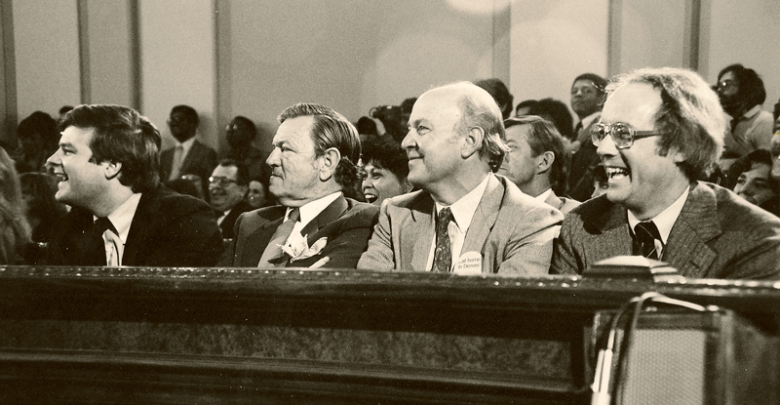From Gillette boxing matches to the Internet in a few short decades

By Jerry Presley

I have been interested in electronic communications since I was a kid, and one of my first memories was in the 1950s when television was coming of age. Our family would drive downtown on Friday nights to watch the Gillette boxing matches “all the way from New York City.”
We’d watch the fights on a black and white TV that was placed in the store window.
One of my first jobs was as an instructor at the University of Texas at Austin in the Department of Radio/TV/Film, teaching a course on “new technologies.” At the time, this included satellites and cable TV.
The development of geostationary satellites had a tremendous impact on cable TV because new programming became available. HBO, CNN, MTV, and ESPN were just a few of the new channels made possible because of the space race.
In the 1970s, cable TV systems expanded from 12 channels all the way to 35 channels driven by new satellite-delivered programming. Innovation was everywhere and broadcast television now had additional competition.
Even though broadcasters offered their programming for “free,” cable was successful because it offered a better product at a price that consumers were willing to pay.
I moved to Denver in 1980 to join the cable TV industry, and at the time Denver was known as the “Cable TV Capital of the World.” It was headquarters to most of the nation’s largest cable TV companies and the Denver Tech Center area was ground zero. The South Metro Corridor is still home to many large telecommunications companies with roots tangled up in the cable industry.
After I left the cable business, I became interested in a new technology called the Internet. Early on, I helped form a company that offered high-speed Internet access using licensed wireless microwave frequencies. We competed directly against providers using slow telephone dial-up access. We offered a faster service and the competition benefited everyone, especially the consumer.
The cable industry today is evolving as more and more people are watching television over the Internet. Last year, YouTube and NetFlix accounted for almost half of all bandwidth consumption. The Internet allows content providers to cannibalize the video revenues from a cable company using the very facilities owned by the cable company.
High-definition content provided by Amazon, Hulu, and a zillion other sources is driving the demand for more bandwidth at almost exponential rates. This transformation is at the heart of the current public-policy debate over what is known as net neutrality.
Net neutrality, also known as the “open Internet,” is embodied in regulations enacted by the Federal Communications Commission in 2015. The FCC gave itself the authority to regulate certain rates and practices of Internet providers in order “to protect the public interest.”
Just last week, the U.S. House of Representatives passed a bill that would repeal the most important part of the FCC regulation. The House majority took the view that the marketplace should regulate Internet rates and practices, not the government.
Strip away the rhetoric and the net-neutrality issue is a philosophical debate about the proper role of government. I don’t know which side will win the debate, but I think this Internet thing is here to stay.
Jerry Presley is a former member of the Greenwood Village City Council. He owns Extensive Networks, a company that provides Internet services to apartments and student-housing facilities. He amuses himself by maintaining a personal website at JerryPresley.com.








